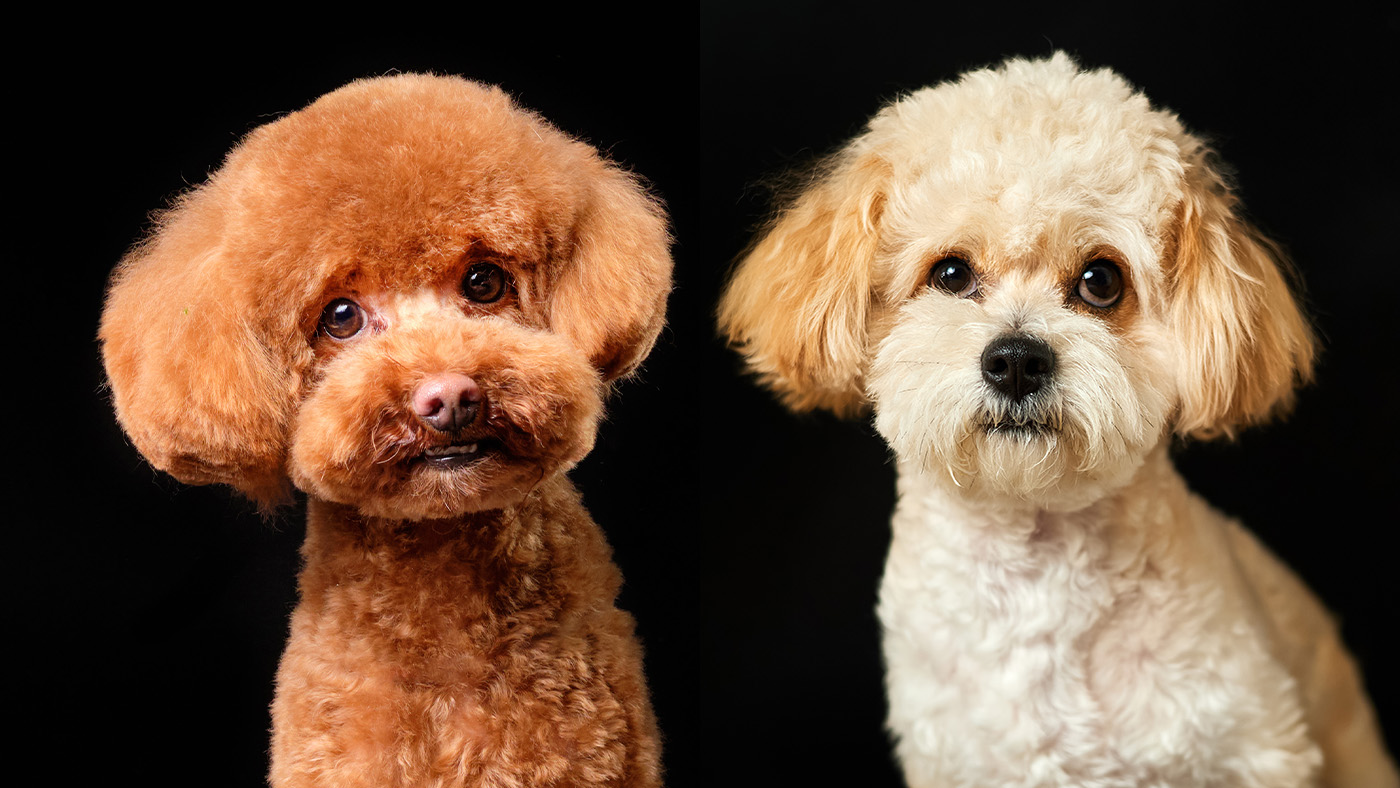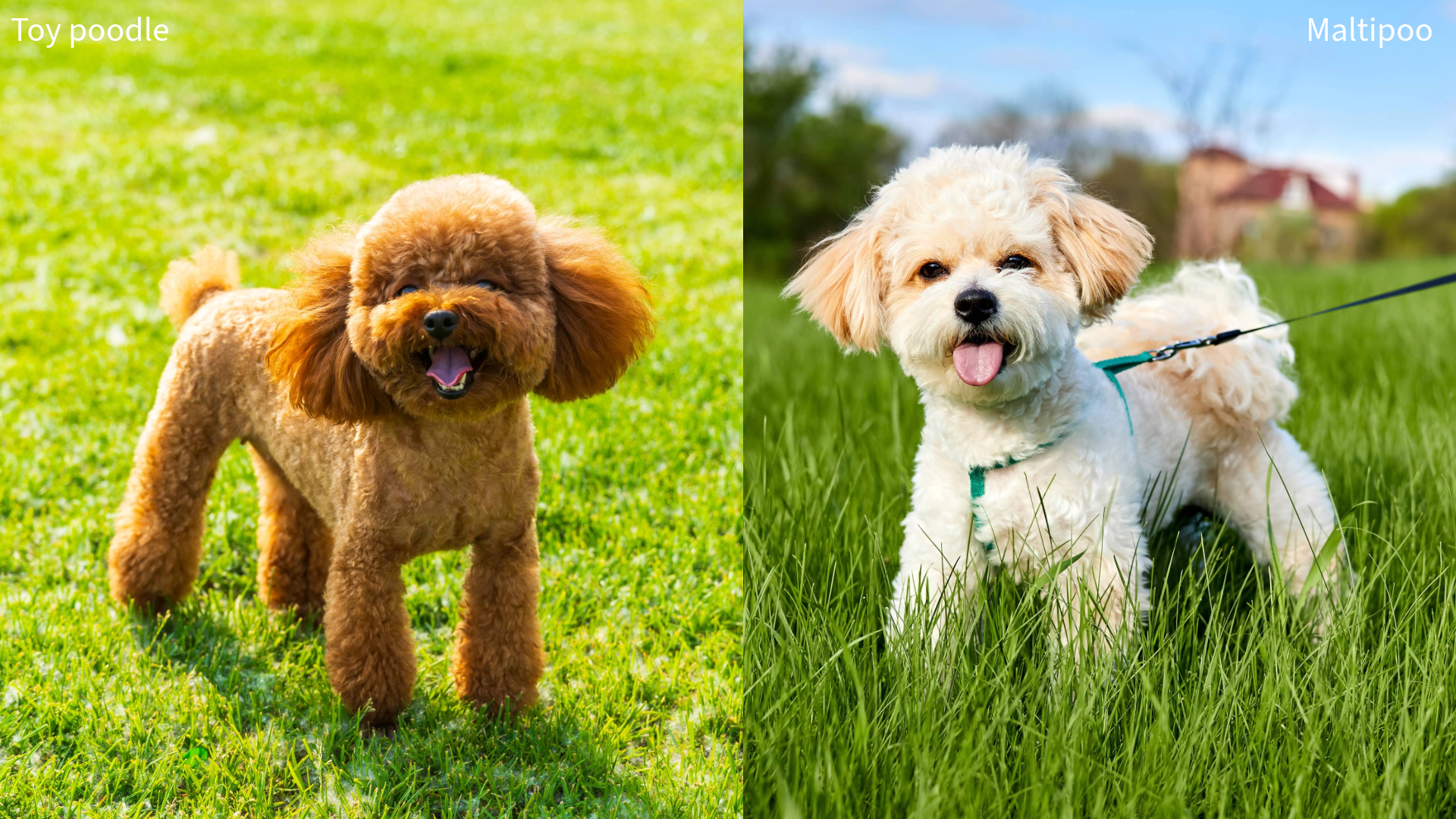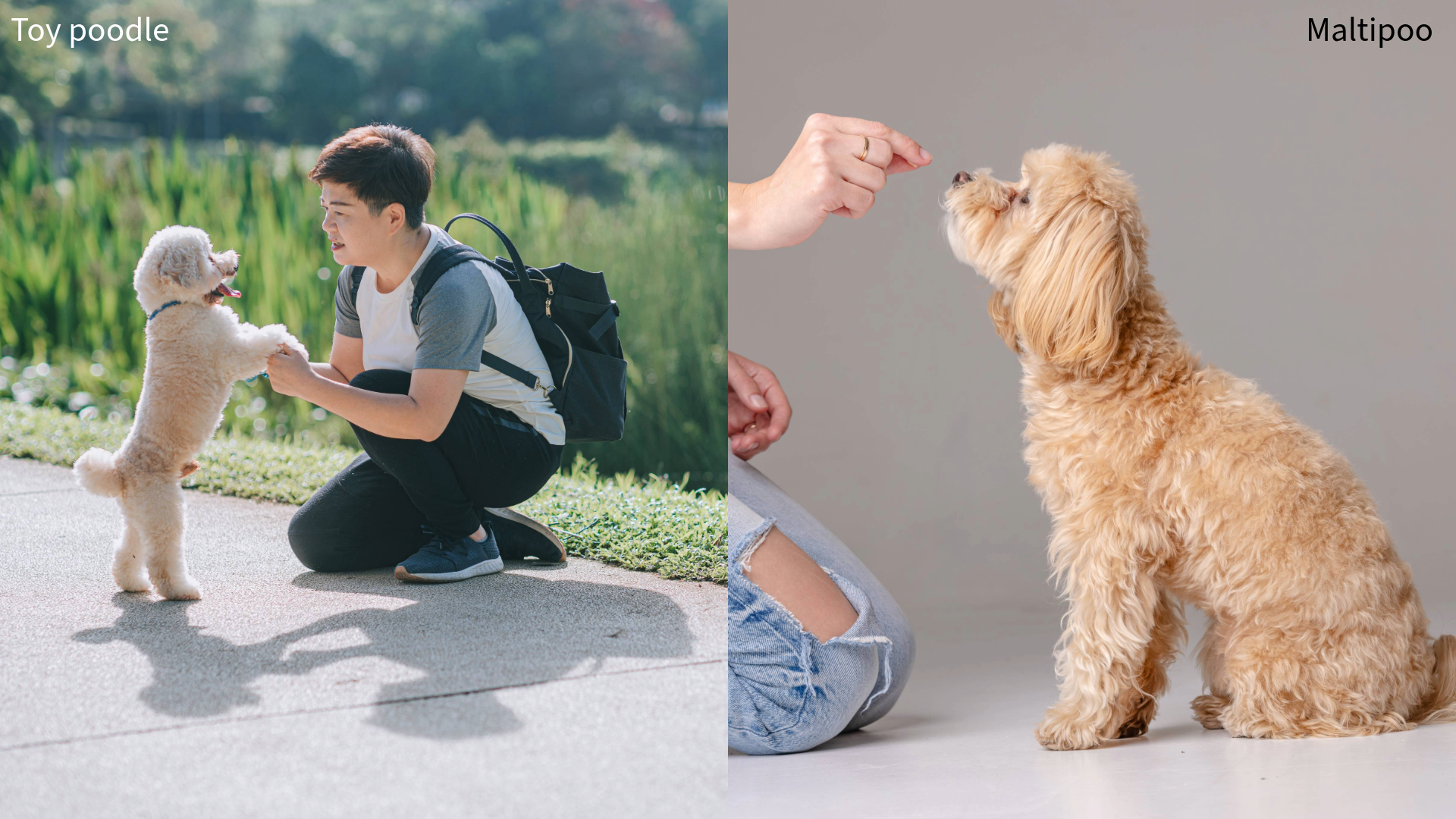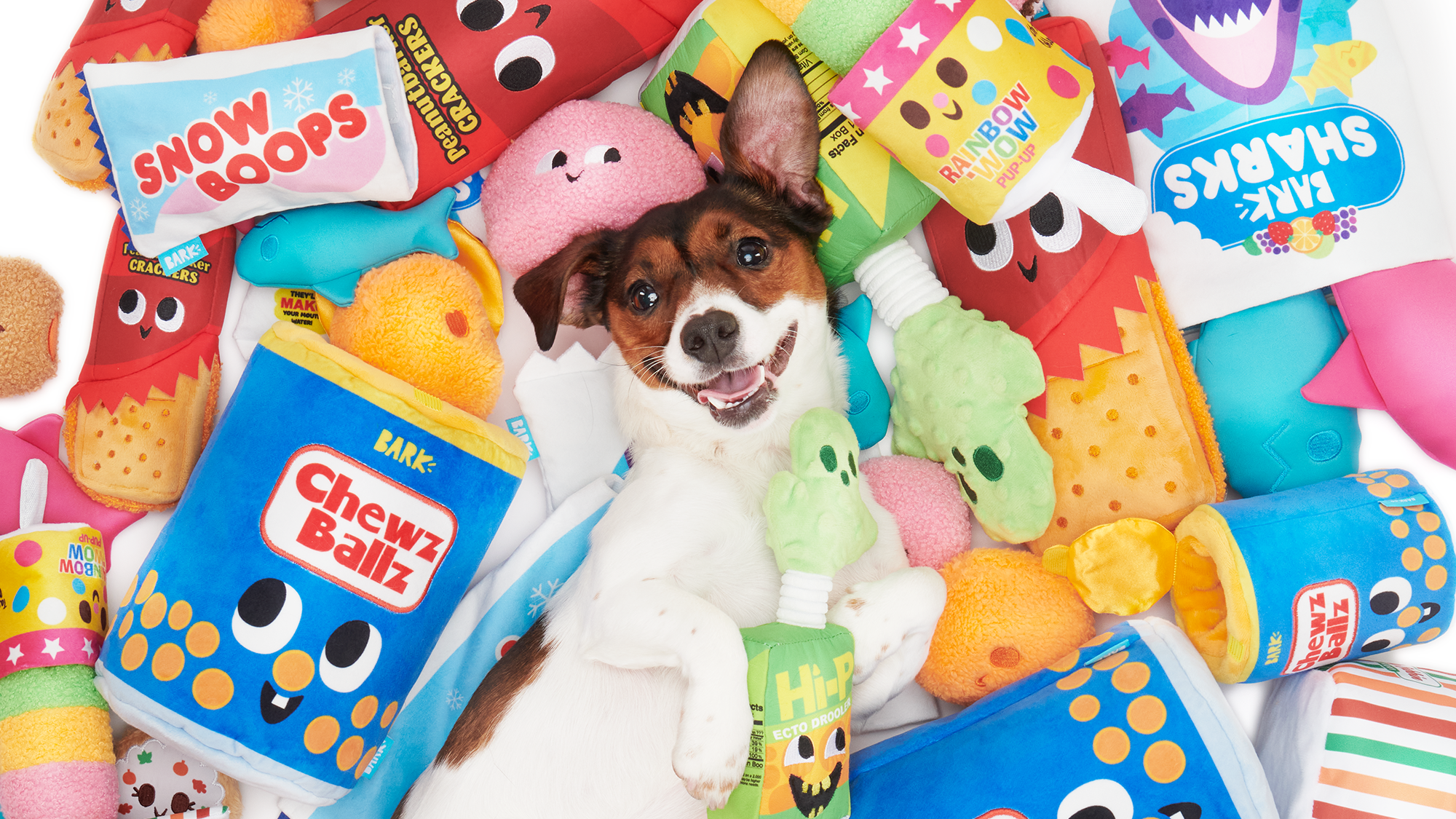Toy poodle vs Maltipoo: Vet-verified breed comparison
Our vet compares toy poodles and Maltipoos to help you decide which is right for you

Toy poodles and Maltipoos might look similar, but a closer comparison reveals some noticeable differences, such as their coat type and exercise needs. Below, we take a look at the similarities, differences, pros, and cons of both breeds to help you decide which is best for your home, family, and lifestyle.
I graduated from the Royal Veterinary College in London in 2011. As a small animal vet working in practice, I’ve noticed that the most popular dog breeds have changed over the 14 years I’ve been qualified.
While toy poodles were very popular in the past, I see fewer of them these days. Maltipoos, on the other hand, are a relatively recent crossbreed (at least officially!) and I’m seeing them more often now.
Size: Toy poodle vs Maltipoo
Toy poodles and Maltipoos are both relatively small dogs. However, the size of a Maltipoo is much more variable.
While toy poodles tend to be less than 10 inches tall, Maltipoos may be anything between nine and 14 inches tall, although most are less than 12 inches. This variation is because Maltipoos are a cross between a Maltese Terrier and a poodle, but the poodle may be a toy poodle or a miniature poodle.

Appearance: Toy poodle vs Maltipoo
The main difference between toy poodles and Maltipoos in terms of appearance is that Maltipoos can have white markings, whereas toy poodles tend to be a solid color (as breed standard).
Possible coat colors for both breeds include white, apricot, black, beige, blue, brown, cream, red, silver, and gray. Both breeds have dangly ears and a slim muzzle (although this might be disguised by their hair!), but Maltipoos may have sleek hair like a Maltese or curly hair like a poodle.
Get the best advice, tips and top tech for your beloved Pets
Intelligence and Trainability: Toy poodle vs Maltipoo
Both toy poodles and Maltipoos can be trained relatively easily. Maltipoos in particular bond strongly with their owners, so pleasing them is a big motivator. However, toy poodles are a little higher in energy, more playful, and potentially a little smarter, meaning training them is quite straightforward.

Exercise needs: Toy poodle vs Maltipoo
Poodles are a high-energy, active breed, so toy poodles and Maltipoos both need a decent amount of exercise – think at least 30–45 minutes daily to avoid boredom, frustration, or weight gain.
If you’re not able to exercise your dog as often as you’d like, you could always involve them in your workout routine. For inspiration, read these ways to workout with your dog.
Grooming: Toy poodle vs Maltipoo
Both dogs require plenty of grooming to prevent mats and keep their skin and fur clean. However, because poodles are a relatively low-shedding breed, you shouldn’t expect to see lots of hair around your home – which might be a relief!
If you want to keep either of these breeds looking and feeling their best, groom them daily or at least three times a week with one of the best dog brushes. While you might expect regular brushing to be an ordeal, both breeds enjoy interaction and contact with their own, so you’ll find it’s great bonding time.

Health considerations: Toy poodle vs Maltipoo
While both breeds are generally considered healthy (particularly the Maltipoo), poodles are prone to a few health conditions, which of course could pass on to any crossbreed that descends from them.
For instance, poodles, like many other small breeds, are prone to luxating patella, which is where their kneecap is looser and more mobile than it should be, and easily slips in and out. This can cause an intermittent hop or a more persistent limp, and occasionally treatment is required, depending on the severity. If your dog hops or skips occasionally, it’s worth getting them checked by a vet.
Poodles are also prone to eye conditions, including progressive retinal atrophy, so getting your poodle or poodle-cross assessed by an ophthalmologist is always a good idea.
Owner suitability: Toy poodle vs Maltipoo
Maltipoos are particularly clingy and don’t enjoy being separated from their carer for long periods. Therefore, their ideal owner would be home a lot or be able to take them along to work or any commitments outside of the home.
Both breeds are active, playful, and intelligent, so they would benefit from a home with someone with an active lifestyle and plenty of time to spend with them.
Neither breed requires an owner with previous dog-owning experience, as they are relatively straightforward to own, but it’s important to take care around young children – ensuring the dog is trained and the children are familiar with gentle handling before you allow them to be together. As with any dog, children and dogs should always be supervised.
If you’re considering having a Maltipoo or toy poodle join your family, you’re making a great choice. These breeds are affectionate, lively, fun, and relatively straightforward to train. However, before taking one on make sure you have the time to dedicate to them, as they often don’t like being left alone.
Read next: Best teddy bear dog breeds and cutest dog breeds

Hannah graduated from the Royal Veterinary College in 2011 and began work straight away at a busy mixed practice. Initially, she treated all species, but focused on small animals from 2014. She has a passion for soft tissue surgery, ultrasound, and canine and feline dentistry, having completed additional training in these areas.
Edited by Megan Milstead.
This feature was last updated in June 2025 by Hannah Godfrey.
Dr Hannah Godfrey is a small animal vet who graduated from the Royal Veterinary College in 2011 and began work straight away at a busy mixed practice. Initially, she treated all species, but focussed on small animals from 2014. She has a passion for soft tissue surgery, ultrasound, and canine and feline dentistry, having completed additional training in these areas.
- Megan MilsteadStaff Writer
